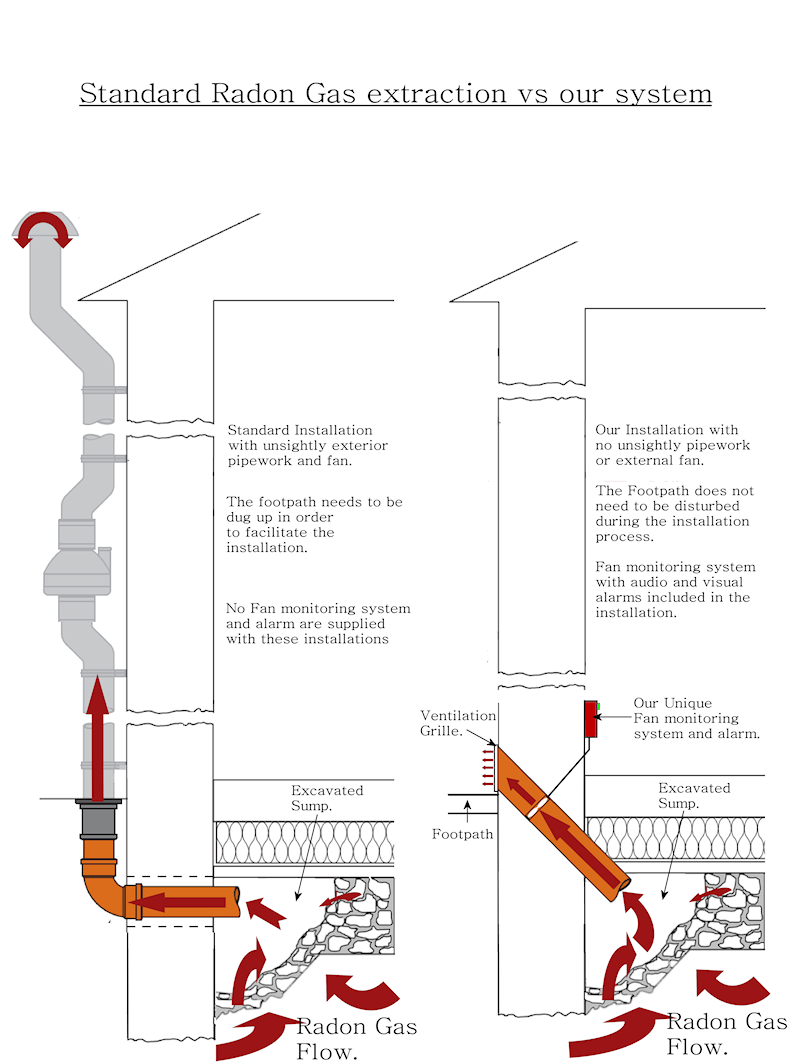The method primarily used to reduce Radon Gas build-up in the home/business is a vent pipe system and fan, which pulls Radon from beneath the building and vents it to the outside.
This method is also known as " Sub-slab depressurization", "Active soil depressurization", or "Soil suction". Generally indoor radon can be mitigated by sub-slab depressurization and exhausting such radon-laden air to the outdoors, away from windows and other building openings.
 The method primarily used to reduce Radon Gas build-up in the home/business is a vent pipe system and fan, which pulls Radon from beneath the building and vents it to the outside.
The method primarily used to reduce Radon Gas build-up in the home/business is a vent pipe system and fan, which pulls Radon from beneath the building and vents it to the outside.
This method is also known as " Sub-slab depressurization", "Active soil depressurization", or "Soil suction". Generally indoor radon can be mitigated by sub-slab depressurization and exhausting such radon-laden air to the outdoors, away from windows and other building openings.
Modern construction that conserves energy by making homes airtight exacerbates the risks of Radon Exposure if Radon is present in the home. This is due to the fact that the Radon can enter the building through cracks and imperfections in the foundations and flooring slabs, but has no way to exit the building due to the airtight sealings on doors, windows and construction joints.
For older buildings in high-risk Radon areas, fitting a Radon Barrier is almost impossible. This would involve practically destroying the building in order to fit a Barrier, and then remaking the building. In cases like these, Radon Mitigation is called for.
The density of the Radon Gas ensures that it settles into the sump. From there, the Fan attached to the sump exit pulls the Radon Gas to the outside where it is dispersed into the environment. This does not cause a hazard from excessive Radon Gas outside, as it is quickly spread into the atmosphere. Radon Gas is only of concern in enclosed spaces.
